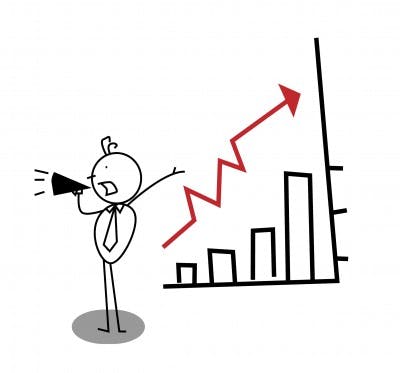According to a new study by the Kaufmann Group, the Silicon Valley isn’t the only location for high growth in recent years.
Salt Lake City and Indianapolis are in the top 10 for locations with high growth companies. Growth is happening and in unlikely places and sectors. Are you ready?
In times of growth, your talent will have to step up. As an example, 30 percent growth year-on-year changes everything. And, adding a few more people to the team to handle more work isn’t enough.
If your division, group or company is growing by 35 percent plus year-after-year, the leader that was once leading a $5 million, one country business can see it double into a global business in two years. The person you hired to stretch into the old job has been pulled, squeezed and extended way beyond their capability.
Growth can bring complexity, globalization, new services and products, or, a dramatically different marketplace. Time and experience “on the job” may be enough for a few, but most will need some help just to keep up.
Growth denial
If you are enjoying continuous growth today – congratulations! But, here are a few signs that you may have your blinders on for keeping pace with your change and growth:
- You haven’t made any key outside hires. If you are only growing talent internally then you are missing the expert who has learned through similar experiences. This doesn’t mean that you will duplicate what has been done before, but that experience can prevent mistakes with big impact on your business.
- You are more concerned about keeping your culture than having the right talent. If you have grown significantly, you are doing a lot right. To quote Marshall Goldsmith, “what got you here isn’t what will get you there.” If you know the future talent needs, then work to find outside talent that fits your unique culture.
- All your planned development is “on the job.” Big change and growth is high intensity learning with new situations on a daily basis. This kind of development won’t just happen naturally without a plan and some support – even with many top performers.
- You haven’t identified any new skills that you need tomorrow that you don’t have today. There are some. Figure out what they are then decide how you get them. Build? Borrow? Buy? Once you know what they are – then have a plan to close the gap.
- You haven’t looked at your talent gaps by group or by person. A few will thrive on being in over their head and fine the way to keep pace. But, get it down to the group and person level so it is targeted and it is actionable.
Growth options
If you have been in denial, what do you do? First off, target the areas that most need your attention. What are the roles and groups that will drive your growth? Narrow it down to those hot spots and then take it down to the individual.
Even a top, top performer may not be able to keep up with multi-year rapid growth. This is not a performance challenge, but a growth challenge! A successful talent and workforce strategy will identify the gap and have a plan to address it.
The basic choices are:
- Self-guided stretch. Keep the same person in the role and let them grow into it as it happens. This may be perfectly acceptable for very high potential talent that thrives on increased expectations and can learn the new role as they go. They may do so through on the job experiences, seeking out experts, self-development and learning from industry – but it’s their responsibility to sort.
- Managed stretch. Keep the same person in the role, but with a very deliberate plan to help them accelerate their development to the next level. In this situation, the Director role may be very different that it was 2-3 years ago because the organization has gotten bigger and more complex. A managed stretch needs a targeted learning plan, additional leadership support, a mentor or pacing performance targets as you phase in bigger responsibilities and expected outcomes.
- Stretch too big. This is when the gap is so big and happening so fast that it outpaces realistic individual development. This is not a reflection on performance, but an intersection of potential and how quickly the business needs this new capability. The remedy may be an outside hire, restructuring roles or buying a consultant to help bridge the gap.
We applaud the organizations that continue to grow, thrive and know that some planning and creativity can keep a growth spurt from catching them off-guard.
This was originally published on PeopleResult’s Current blog.
